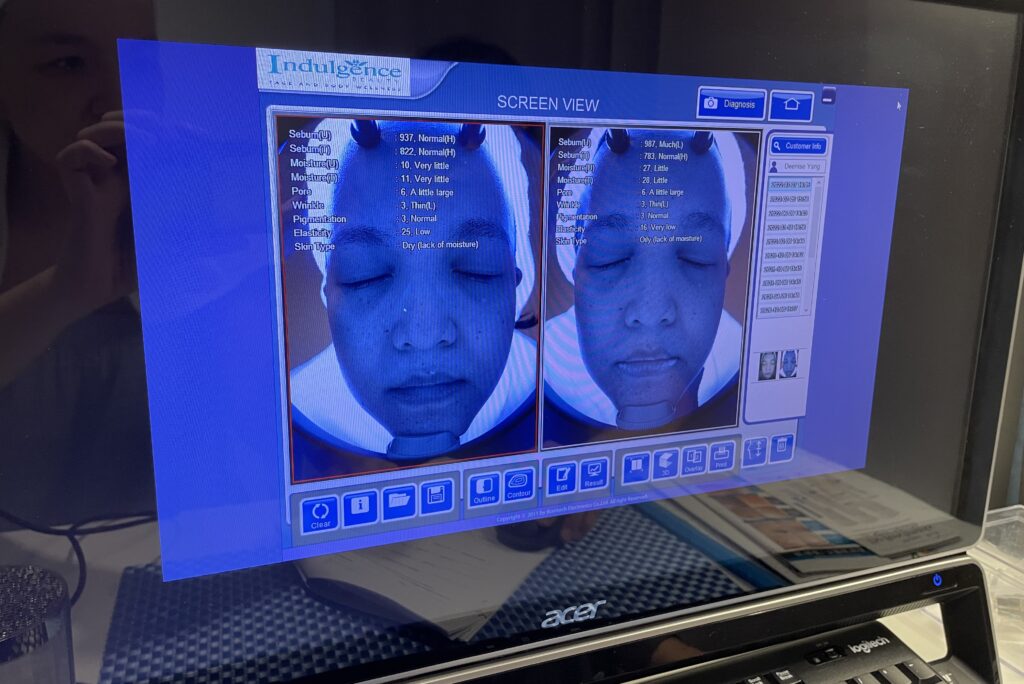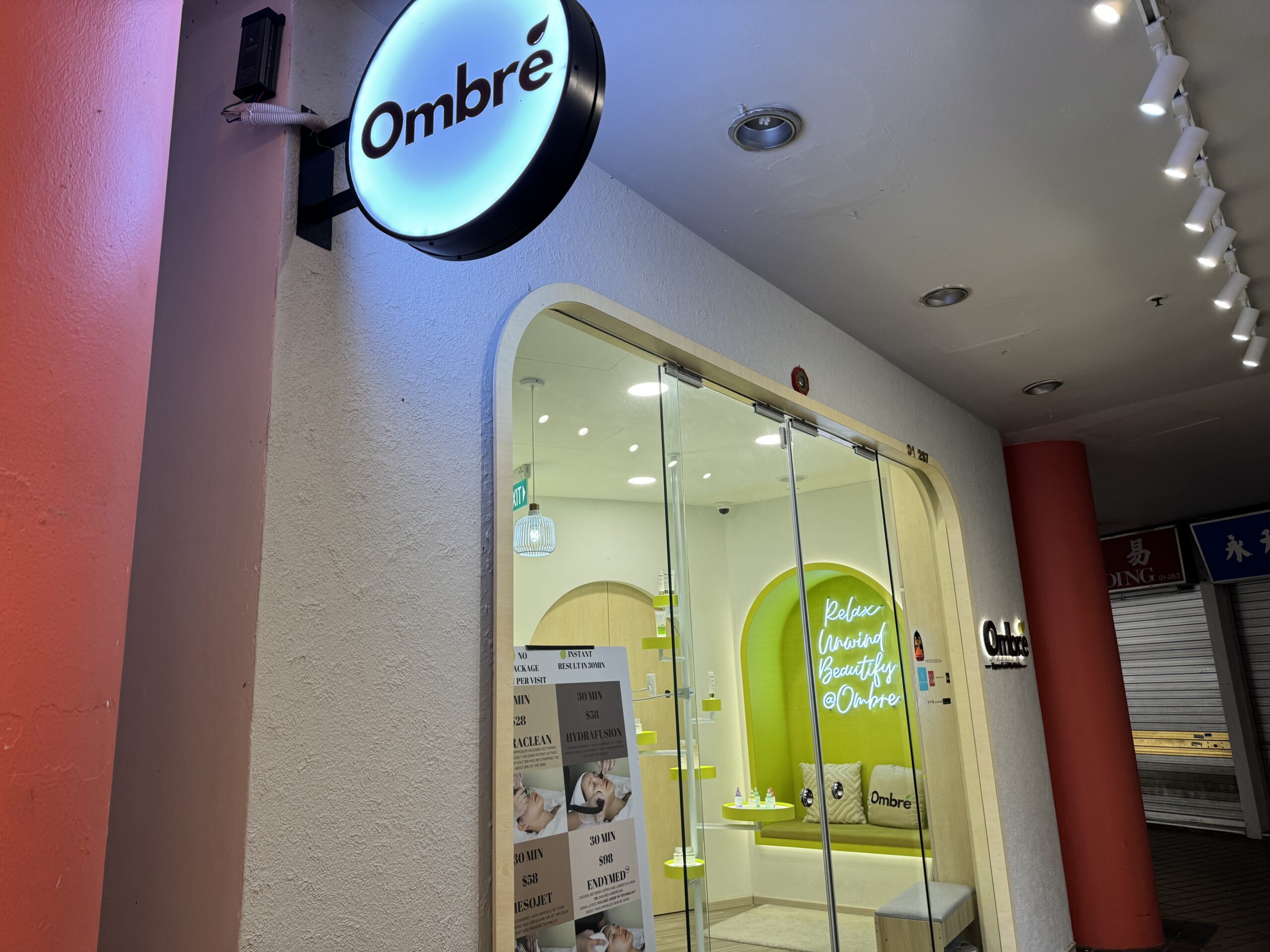
Now that I am in my mid-thirties, the skin pigmentation issue is real. Reality check.

The pigments usually form beneath the skin and over time, they will start to surface and become more obvious. During my recent visit to Indulgence Beauty, they performed a skin analysis for me. And true enough, the pigmentations have started to surface and become more prominent. I used to think that I would not suffer from pigmentation issues since I’ve been applying sunscreen. But sun exposure is not the sole cause of pigmentation. Ageing, hormonal influences and skin inflammation can also trigger melanin production which causes the skin tone to look uneven.
So now that the pigments are all showing up on my skin, the important question is – is this condition reversible? Can I disintegrate the melanin in my skin or slow down its production?
The beauty therapist, Angeline, from Indulgence Beauty shared with me that pigmentations can be lightened in the skin but first the skin needs to be moist, supple and healthy for it to absorb skincare products that would lighten the skin. That is why she did a hydrating facial treatment for me during my last facial visit and took great care of my skin to ensure that it was deeply cleansed and well-hydrated. Once the skin is well-hydrated, any products applied to the skin would be absorbed more effectively.
Here are the 5 ways to lighten dark spots or pigmentations.
1. Use skincare products that contain Kojic Acid or Vitamin A
Kojic acid interferes with the production of melanin as it inhibits the formation of tyrosine, an amino acid that is required to produce melanin. Interestingly, it is a by-product of fermented foods like Japanese Sake, soy sauce and rice wine.
Vitamin A products like Retinol and Tretinoin help increase cell turnover and promote skin rejuvenation. Retinol removes and exfoliates unnecessary dead skin cells, which causes the basal layer to produce newer skin cells, thus lightening the appearance of the pigments.
2. Avoid picking or pulling your skin
The worst thing you can do to your skin is to pick your pimples or any areas of your skin. It can worsen the skin inflammation underneath and cause scars or discolouration in the skin. That is why it is important to be really gentle with your skin.
3. Rely on dermatology medication
Hydroquinone tablets are used for treating hyperpigmentation which includes acne scars and acne spots. But do note that there are some common side effects such as dryness, peeling, mild burning or redness in the skin.
4. Dermatological procedures like chemical peels and microdermabrasion
Like Retinol, these dermatological procedures gently remove the top layer of the skin to allow the newer skin layer to form. After the skin recovers, the pigmentations will be lightened and look less obvious.
5. Use sunscreen with SPF30 daily and reapply it frequently
Nonetheless, the best way to reduce the formation of pigmentation is to stay away from the sun as much as you can and use sunscreen with at least an SPF30 on a daily basis. It is also best to reapply the sunscreen every 4 to 6 hours especially if you are out the whole day. And remember to remove the sunscreen with a gentle milk cleanser or makeup remover.
In conclusion, I don’t think the pigmentation can magically be erased or disappear but by practising some of these methods above, the appearance of dark spots can be lightened over time. The best way is still to prevent melanin production by taking good care of your skin especially when you are still in your early twenties.


![[New exhibition of National Gallery] City of Others: Asian Artists in Paris, 1920s–1940s](https://deeniseglitz.com/wp-content/uploads/2025/04/IMG_5400-150x150.jpeg)





